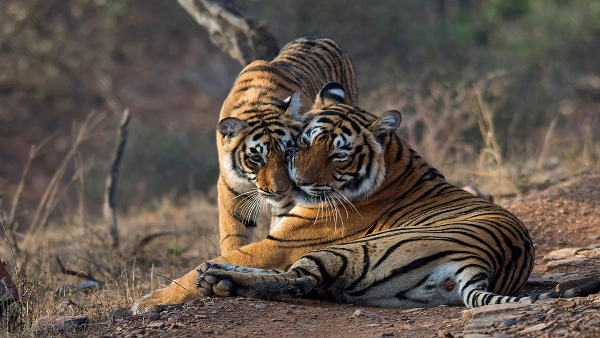It has come to light that some section of media has presented the figure of tiger deaths in the country, in a manner which is a lopsided view of tiger conservation in the country and has apparently attempted to malign efforts of the Government of India in this regard and sensationalize the issue.
The National Tiger Conservation Authority(NTCA),a statutory body of the Ministry of Environment, Forest and Climate Change would like to put across the following :
Due to efforts of the Government of India thorough the National Tiger Conservation Authority, the tiger has been taken from the brink to an assured path of recovery, which is evident in findings of the quadrennial All India Tiger Estimation conducted in 2006,2010,2014 and 2018.These results have shown a healthy annual growth rate of tigers at 6%, which offsets natural losses and keeps tigers at the habitats carrying capacity level, in the Indian context. For the period 2012 to 2019, one can observe that the average tiger deaths per year in the country hover around 94, which is balanced by the annual recruitment as highlighted by this robust growth rate. In addition, the National Tiger Conservation Authority has taken several steps under the ongoing Centrally Sponsored Scheme of Project Tiger to address poaching,which too,is significantly controlled as seen in the confirmed poaching and seizure cases.
The National Tiger Conservation Authority maintains the highest standards of transparency in so far as making tiger death statistics available to the citizen through its website as well as dedicated portal – www.tigernet.nic.in, so that people can make a logical assessment, if they desire. The presentation of data over a long time frame spread across 8 years indicates an intent to imprint the gullible reader with large numbers which may cause undue alarm. Also, not adequately covered is the fact that 60 percent of tiger deaths in India are not attributable topoaching.
It is also pertinent to mention that the NTCA, through a dedicated Standard Operating Procedure, has a stringent protocol to ascribe cause to a tiger death, which is treated as unnatural, unless otherwise proved by the State concerned through submission of necropsy reports, histopathological and forensic assessments besides photographs and circumstantial evidences. It is only after a detailed analysis of these documents that cause is ascribed to a tigerdeath.
While it is appreciated that figures as available on the NTCA’s website and as provided in the RTI reply have been used in these reports, the manner in which it has been presented causes alarm and does not take into account the gamut of processes that go into dealing with tiger death in the country and the natural gains that have been made in tiger conservation,as a result of sustained technical and financial interventions by the Government of India under its Centrally Sponsored Scheme of Project Tiger being steered by the NTCA.
It is expected that media, will inform the aforesaid facts, to the country so that there is no sensationalism and citizens are not led to believe that there is cause for alarm.
Source: PIB
You may also like
-
Navigating India’s Skill Landscape
-
Trade Connect E-platform For Exports Is Single Window, Fast, Accessible And Transformational: Shri Piyush Goyal
-
India-us Working Together In Areas Like Critical Minerals, Supply Chains And Advanced Technologies: Shri Piyush Goyal
-
Cabinet Approves Health Coverage to All Senior Citizens of the Age 70 Years and Above Irrespective of Income
-
Cabinet Approves PM Electric Drive Revolution in Innovative Vehicle Enhancement (PM E-DRIVE) Scheme With An Outlay of ₹.10,900 Crore
